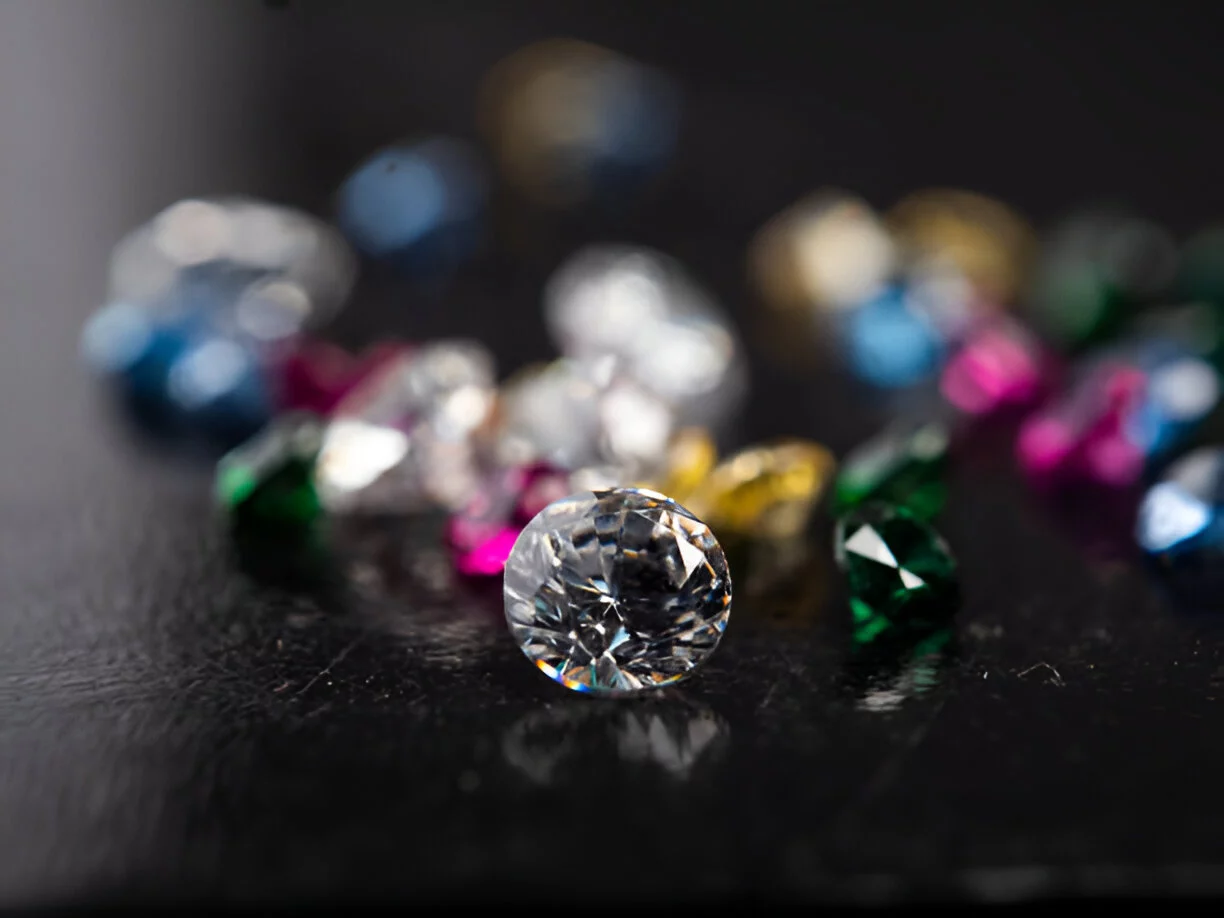When it comes to choosing the perfect gemstone for an engagement ring or special piece of jewellery, many people immediately think of diamonds. However, moissanite has become a strong contender in recent years due to its dazzling appearance and affordability.
While both stones sparkle brilliantly and offer unique benefits, the right choice comes down to personal preference, budget, and the long-term value you’re seeking.
Understanding the Basics
Diamonds are made of carbon and are one of the hardest natural substances on Earth. They’ve long been prized for their clarity, brilliance, and symbolic value. Moissanite, on the other hand, is a lab-created gemstone made of silicon carbide. It’s nearly as hard as a diamond and known for its intense sparkle, often appearing even more fiery under light.
Each gemstone has its strengths. Diamonds are valued for their tradition and prestige, while moissanite offers a high-end look at a fraction of the cost. Some buyers even consider alternative options like the yellow diamond, which is a natural diamond with a warm, golden hue. Yellow diamonds provide a unique twist for those who want something traditional but different.
Appearance and Brilliance
When it comes to sparkle, both diamonds and moissanite perform well—but in slightly different ways. Moissanite has a higher refractive index than diamonds, meaning it bends light more and often displays more rainbow-coloured flashes. This is often described as “fire,” and it gives moissanite its distinct brilliance. However, some people find the sparkle to be a bit too colourful or artificial-looking, especially in bright lighting.
Diamonds, particularly those that are well-cut, offer a more classic and refined brilliance. Their sparkle tends to be more white and subtle, which many people associate with elegance. A yellow diamond, while offering a more unique colour, still maintains the classic diamond brilliance and adds an element of warmth to the appearance.
Durability and Longevity
Durability is a key factor if you plan to wear your jewellery every day. Diamonds score a perfect 10 on the Mohs hardness scale, making them highly resistant to scratches and chips. This makes them ideal for engagement rings, which go through daily wear and tear.
Moissanite is also very durable, scoring 9.25 on the Mohs scale. While not quite as hard as diamonds, it is still tougher than most other gemstones and is more than capable of withstanding everyday use. Both stones are great choices in terms of durability, but diamonds do hold a slight edge in terms of toughness.
Price and Value
One of the most significant differences between diamonds and moissanite is the price. Moissanite is far more affordable than diamonds. For example, a one-carat moissanite stone might cost only a few hundred dollars, whereas a similar diamond could cost several thousand.
The lower cost of moissanite makes it appealing to those who want the look of a diamond without the hefty price tag. However, when it comes to long-term value and resale, diamonds typically hold their value better over time. Yellow diamonds, in particular, can appreciate in value due to their rarity and appeal as coloured diamonds become more sought after.
If you’re looking for an investment piece, a natural diamond—or a rare coloured diamond like a yellow diamond—is likely the better choice. But if you’re more concerned about appearance than investment, moissanite offers incredible value.
Ethical and Environmental Factors
With increasing awareness around ethical sourcing, many people consider where and how their gemstones are produced. Moissanite is lab-grown, making it a more eco-friendly and ethical choice. There’s no mining involved, and the environmental impact is significantly lower.
Diamonds, particularly those that are not certified conflict-free, can raise ethical concerns. That said, there are many initiatives and certifications (like the Kimberley Process) that aim to ensure diamonds are ethically sourced. Yellow diamonds and other coloured diamonds are also available through ethical suppliers who offer transparency about their origin.
If sustainability is important to you, moissanite is a very strong contender. However, ethically sourced diamonds—including stunning yellow diamond varieties—are available for those who prefer natural stones.
Style and Personal Preference
Style is subjective, and ultimately, your choice between diamond and moissanite should align with your personal taste. Some people are drawn to the traditional appeal of a diamond, especially for major life events like engagements and weddings. Others love the extra sparkle and affordability of moissanite.
If you want a standout piece, a yellow diamond can be the perfect choice. It combines the elegance of a diamond with a touch of personality and colour, offering something that’s both luxurious and distinctive.
Both diamonds and moissanite have their own advantages. Diamonds, especially rare types like the yellow diamond, offer timeless elegance, durability, and investment value. Moissanite provides stunning brilliance at a more accessible price, with the added benefit of being ethically sourced.
The best choice for you depends on your budget, values, and the look you’re going for. Whether you choose the fire of moissanite or the classic brilliance of a diamond, you can find a gemstone that suits your style and tells your story beautifully.

Lexy Summer is a talented writer with a deep passion for the art of language and storytelling. With a background in editing and content creation, Lexy has honed her skills in crafting clear, engaging, and grammatically flawless writing.



